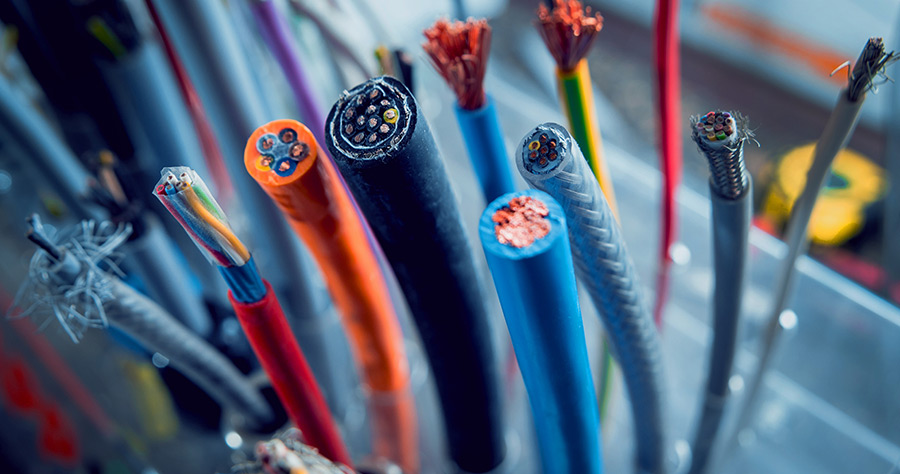Wires & Cables
Wires and Cables are fundamental components in electrical and communication systems, enabling the efficient transmission of electricity and data across homes, industries, infrastructure, and digital networks. Though often used interchangeably, wires and cables have distinct meanings: a wire is a single conductor (usually copper or aluminum), while a cable consists of multiple wires bundled together, often insulated and sheathed for protection.
These components play a vital role in various applications, including power transmission, telecommunications, automotive, aerospace, construction, and consumer electronics. Their design, type, and material depend on the application’s voltage, current, environmental conditions, and safety requirements.
Common types of wires and cables include:
-
Power Cables: Used in power transmission and distribution (LV, MV, HV)
-
Coaxial Cables: Used for cable TV, internet, and signal transmission
-
Fiber Optic Cables: Transmit data as light signals, ideal for high-speed internet
-
Control & Instrumentation Cables: Used in industrial automation and control systems
-
Building Wires: Installed in residential and commercial buildings for power and lighting
Materials used in manufacturing include:
-
Conductors: Copper (most common for conductivity) and aluminum (cost-effective and lightweight)
-
Insulation: PVC, XLPE, rubber, or Teflon, providing thermal and electrical resistance
-
Sheathing: Additional layers for mechanical protection, fire resistance, and waterproofing
Modern wire and cable manufacturing focuses on durability, energy efficiency, flexibility, and compliance with safety standards such as ISI, IEC, and UL. Flame-retardant and halogen-free cables are also gaining popularity in sensitive environments like hospitals, data centers, and airports.
Wires and cables face challenges such as:
-
Voltage drops and losses over long distances
-
Environmental degradation (moisture, chemicals, UV exposure)
-
Fire hazards due to overheating or short-circuits
-
Counterfeit or substandard materials affecting performance and safety
Innovations in the field include smart cables with embedded sensors, recyclable materials, and nanotechnology-based insulation for improved conductivity and longevity.
In summary, wires and cables are the lifelines of modern infrastructure. Whether delivering electricity or data, their performance, quality, and reliability are essential for safe and seamless connectivity in today’s connected world.
